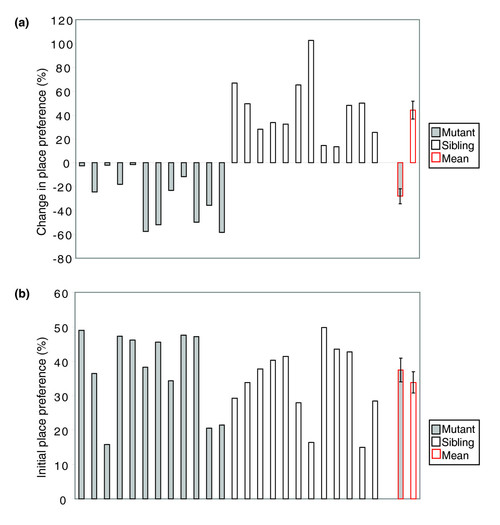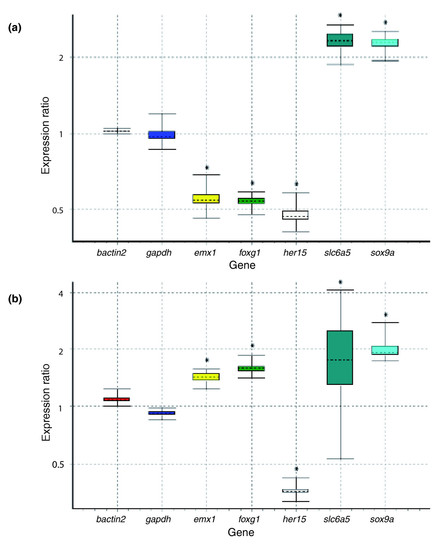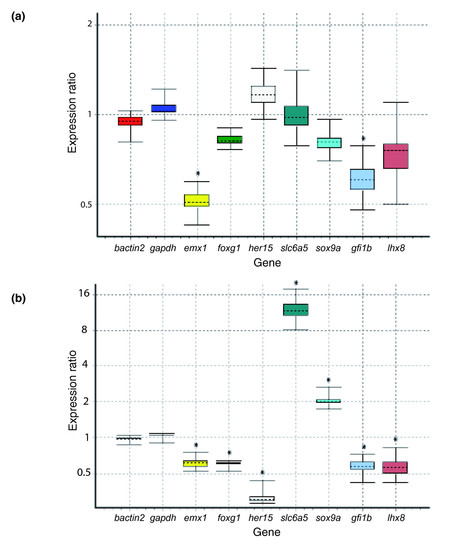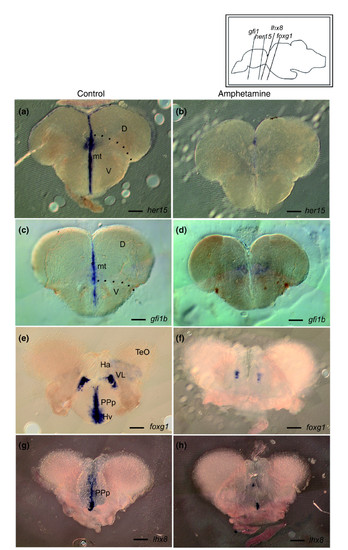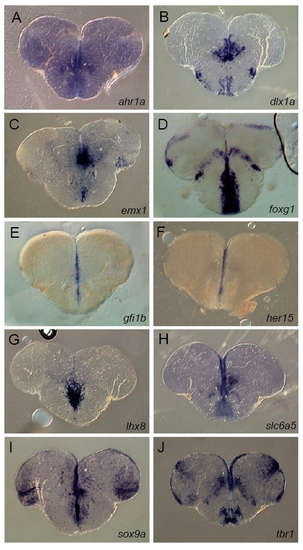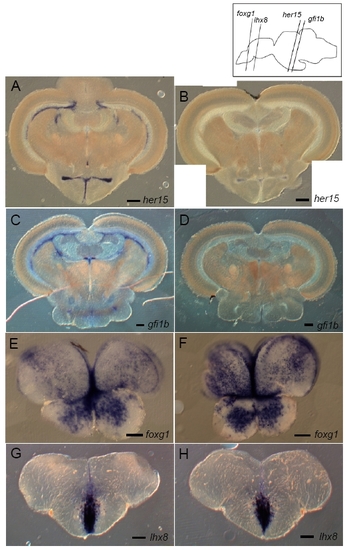- Title
-
Zebrafish reward mutants reveal novel transcripts mediating the behavioral effects of amphetamine
- Authors
- Webb, K.J., Norton, W.H.J., Trumbach, D., Meijer, A.H., Ninkovic, J., Topp, S., Heck, D., Marr, C., Wurst, W., Theis, F.J., Spaink, H.P., and Bally-Cuif, L.
- Source
- Full text @ Genome Biol.
|
The dominant mutant naddne3256shows no response to amphetamine, but a normal initial place preference. (a) Conditioned place preference (%) of 24 individuals of a naddne3256 family (generation F3), showing 12 mutants and 12 siblings. Mutants were defined as showing no or a negative change in place preference. Siblings were defined as having a change in place preference of 5% or over. The last two bars represent the means for both groups. The difference between the means is statically significant (t-test with unequal variances; P = 2.3E-07). (b) Initial place preference (%) for the same 24 individual fish. The last two bars represent the means for both groups. There is no significant difference between the two means (two sample unequal variance t-test P = 0.45). Error bars represent the one fold of the standard error. PHENOTYPE:
|
|
Validation using quantitative PCR. Individual genes with different biological roles were selected from the reward pool (Figure 3a) for qPCR using original RNA from (a) wt+/wt- and (b) mut+/sib+. The qPCR experiment revealed selected genes showed expression changes similar to those seen in the microarray results. The figures show box plots of relative gene expression, where the top and the bottom of each box indicate the 75th and 25th percentiles, respectively, whereas the dotted line represents the median. Asterisks indicate that the probability of the alternative hypothesis (that the difference between sample and control groups is only due to chance (P(H1)) being correct is ≤ 0.05 (see also Materials and methods). EXPRESSION / LABELING:
|
|
Validation and categorization of transcripts in acute and/or chronic response to amphetamine using quantitative PCR. qPCR was performed on the brain of fish injected with one dose (acute) or 18 doses of amphetamine (chronic). (a) Two genes, gfi1b and emx1, were downregulated after one dose of amphetamine. (b) The remaining transcripts were down- or up-regulated in the same direction as the microarray in the chronic situation. The figures show box plots of relative gene expression, where the top and the bottom of each box indicate the 75th and 25th percentiles, respectively, whereas the dotted line represents the median. Asterisks indicate that the probability of the alternative hypothesis (that the difference between sample and control groups is only due to chance (P(H1)) being correct is ≤ 0.05 (see also Materials and methods). |
|
Candidate genes validated using in situ hybridization. (a, c) gfi1b and her15 are expressed in ventricular zones throughout the brain, including in the midline of the telencephalon. (b, d) Upon chronic amphetamine administration, this expression is visibly down-regulated, and this throughout the brain (see also Additional data file 8a-d). Upon amphetamine administration, (f, h) the expression of foxg1 and lhx8 is reduced in the parvocellular preoptic nucleus, posterior part (PPp) (foxg1 and lhx8) and in the ventral zone of the periventricular hypothalamus (Hv) (foxg1), when compared to (e, g) the brains of animals injected with a saline solution. The expression pattern of these genes remains unchanged in other brain areas upon amphetamine administration (Additional data file 8e-h). Scale bars = 100 μm in all panels. D = dorsal telencephalic area; Hv = ventral zone of the periventricular hypothalamus; mt = midline of the telencephalon; PPp = parvocellular preoptic nucleus, posterior part; V = ventral telencephalic area; VL = ventrolateral thalamic nucleus. EXPRESSION / LABELING:
|
|
Expression in the adult brain of the 10 differentially regulated transcripts chosen for validation (in situ hybridization - blue signal0 on cross sections at telencephalic levels, dorsal up). ahr1a (A), dlx1a (B), emx1 (C), foxg1 (D), gfi1b (E), her15 (F), lhx8 (G), slc6a5 (H), sox9a (I) and tbr1 (J) are expressed in the adult zebrafish brain, including the telencephalon, as illustrated here. gfi1b and her15 are restricted to the ventricular zone (midline, arrows). d=dorsal telencephalic area (pallium); v=ventral telencephalic area (subpallium). |
|
Expression of her15 , gfi1b , foxg1 and lhx8 up on chronic amphetamine administration, as revealed by in situ hybridization. The expression of her15 and gfi1b was lost upon amphetamine administration throughout the brain (A-D) (see also Fig.2A-D). The expression of foxg1 and lhx8 were changed in the parvocellular preoptic nucleus ( foxg1 and lhx8) and in the ventral zone of the periventricular hypothalamus (foxg1) (see Fig.2E -H) but not in other areas of the brain, including the telencephalon (E -H). |

Unillustrated author statements EXPRESSION / LABELING:
|

